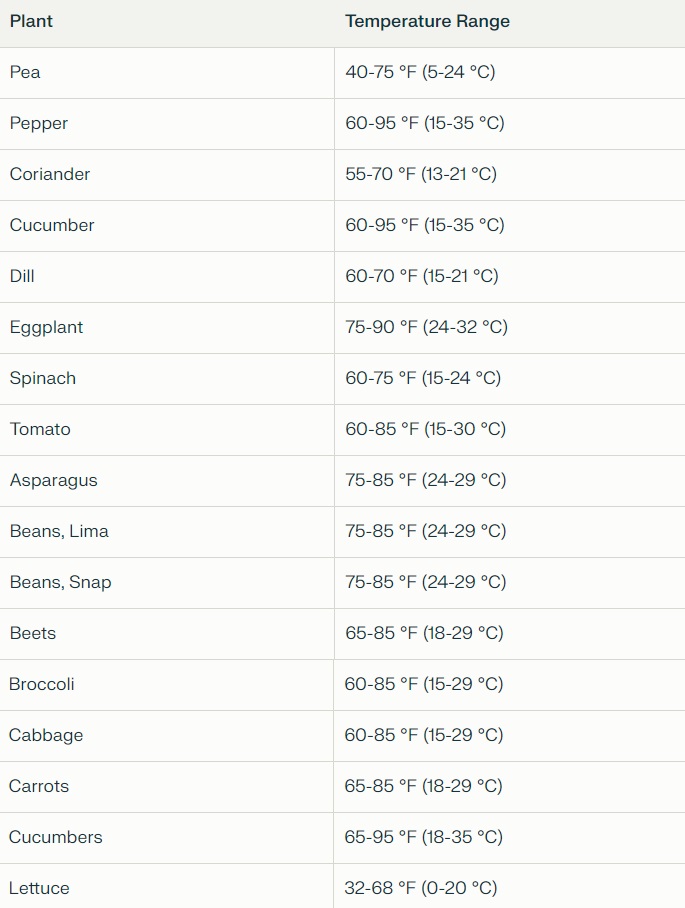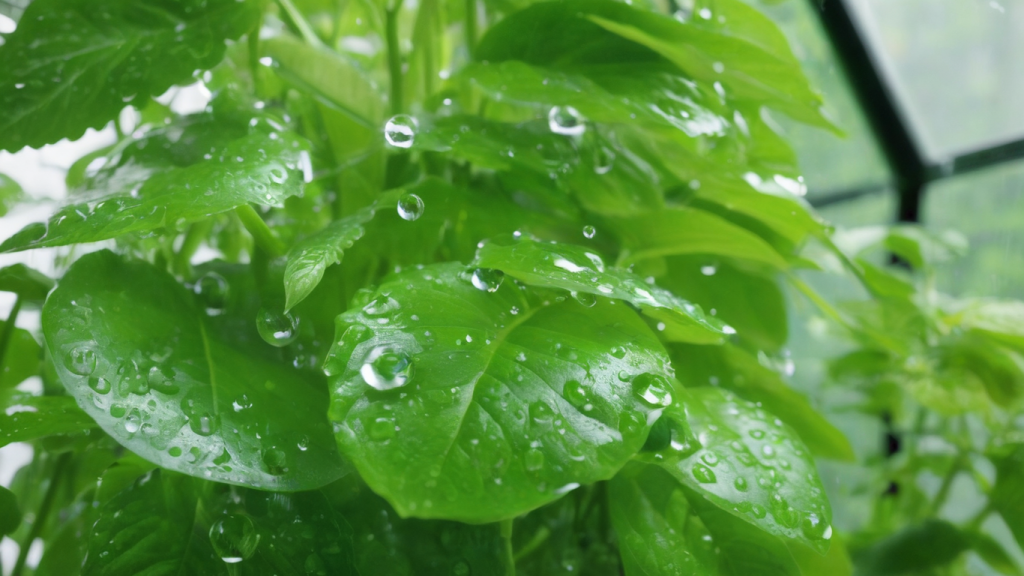Key Insights for Optimal Greenhouse Climates:
- Understanding the ideal temperature and humidity levels is crucial for plant health.
- Modern monitoring tools like digital thermometers and hygrometers are essential for precision.
- Automated systems can significantly simplify environmental control in greenhouses.
- Regular data analysis helps in making informed decisions for greenhouse management.
- Practical strategies for temperature and humidity adjustment can mitigate common challenges
The Heartbeat of Urban Greenhouses: Temperature and Humidity
Imagine your greenhouse as a living, breathing space. The heartbeat of this space? Temperature and humidity. These two factors are like the pulse and breath of your plants. They can mean the difference between a bountiful harvest and a withered garden.
Why Temperature Management is Key for Plant Health
Let’s talk temperature first. Just like us, plants have a comfort zone. If it’s too cold, they slow down and stop growing. Too hot, and they can get stressed, leading to all sorts of problems. That’s why keeping an eye on the thermometer is essential. You want to maintain a steady temperature that’s just right for your plants.
Here is a table summarizing the ideal temperature for the germination of various plants:

Most importantly, different plants have different needs. Leafy greens might prefer it cooler, while tomatoes love the heat. Knowing your plants’ preferences is the first step in becoming a pro at temperature management.
Humidity Levels: Striking the Right Balance for Prosperous Growth
Now, let’s chat about humidity. It’s all about the water vapor in the air, and it’s a delicate dance. Too much humidity can invite mold and pests, while too little can dry out your plants and stunt their growth. The trick is to find that sweet spot where your plants are happy, and the air around them is just moist enough to keep them hydrated without being a breeding ground for trouble. The ideal humidity for a greenhouse is around 80% humidity.

The Tools of the Trade: Monitoring Technology
So, how do you keep track of all this? With the right tools. Modern technology has given us some pretty nifty gadgets to help monitor our green spaces.
Thermometers and Hygrometers: Your First Line of Defense
Enter the dynamic duo: thermometers and hygrometers. These aren’t your average devices. Today’s digital versions give you precise readings and can even alert you when things are heading out of bounds. It’s like having a personal assistant dedicated to your greenhouse’s climate.
Automated Systems: The Green Thumb’s High-Tech Buddy
But what if you could have a system that not only monitors but also adjusts the temperature and humidity for you? That’s where automated systems come in. They can turn on heaters, fans, or misters based on the readings they get, keeping your hands free and your mind at ease.
Remote Monitoring: Keeping a Watchful Eye from Afar
And the best part? You don’t even need to be in the greenhouse to keep tabs on things. Remote monitoring systems let you check in on your plants from anywhere, right from your smartphone or computer. It’s peace of mind in your pocket.
Navigating Through Temperature Graphs and Charts
Once you’ve got your monitoring tools set up, you’ll start to see patterns in temperature changes throughout the day and night. These patterns will show up in graphs and charts if you’re using a digital system. Reading these visual aids is like reading a story. They tell you when your plants are basking in the perfect amount of warmth and when they’re in need of a little climate adjustment. Pay attention to spikes and drops – they’re clues on how to tweak your greenhouse environment.
Interpreting Humidity Trends for Informed Decisions
Humidity trends can be a bit trickier to interpret, but once you get the hang of it, you’ll be making smarter decisions for your plants. High humidity at the wrong time can spell disaster, while low humidity can leave your plants thirsting for moisture. By tracking these trends, you’ll know when to add a dehumidifier to the mix or when to give your plants a refreshing mist.
Crafting the Perfect Atmosphere: Practical Strategies
Armed with all this information, you’re now ready to craft the perfect atmosphere for your urban greenhouse. Here are some practical strategies to get you started.
When to Turn Up the Heat: Managing Cold Spells
Cold spells can sneak up on you, especially in the city where buildings can block the sun. If you notice the temperature dropping too low for comfort, don’t hesitate to turn up the heat. A reliable heater, properly sized for your space, can be a plant-saver. Just remember to monitor closely to avoid overheating.
Beating the Heat: Cooling Techniques to Lower Overheated Greenhouses
Conversely, when the sun’s beating down and your greenhouse feels more like a sauna, it’s time to cool things down. Shade cloths can cut down on the intense sunlight, and opening vents or using fans can help circulate the air and lower the temperature. It’s all about finding the right balance for your urban oasis.
Drying Things Out: Reducing Excess Moisture
Too much moisture can lead to all sorts of issues, from mold to mildew to unhappy plants. If you’re dealing with excess humidity, consider improving your ventilation or using a dehumidifier. And don’t forget about plant spacing – good air circulation around each plant can help keep moisture levels in check.
Misting the Air: Addressing Dry Conditions
If the air in your greenhouse is too dry, your plants may start to suffer. A simple solution is to use a mister to gently increase the humidity. Be sure to mist in the morning so that your plants have time to dry before the cooler evening temperatures set in, which can help prevent diseases.
Troubleshooting Common Greenhouse Climate Challenges
Even with the best plans, you might run into some climate challenges in your greenhouse. Here are a few common issues and how to tackle them:
Defeating Mold and Mildew: Responding to High Humidity Woes
When humidity levels soar, mold and mildew can become unwelcome guests. To combat these intruders, increase air circulation with fans and make sure your greenhouse has proper drainage. Sometimes, it’s as simple as adjusting your watering schedule to allow the soil and air to dry out a bit more between waterings.
The Wilting Worry: How Low Humidity Can Harm Plants
On the flip side, low humidity can cause plants to wilt and struggle. This is often a sign that your plants are losing more water through their leaves than they’re able to take up from their roots. To help them out, try grouping plants together to create a microclimate with higher humidity, or use a humidifier to add moisture to the air.
Case Studies: Success Stories in Urban Greenhouse Management
Let’s look at some real-life examples of urban gardeners who’ve mastered their greenhouse climates:
Turning Up the Heat: A Winter Wonderland Gone Green
One urban gardener faced the challenge of a cold, snowy winter. By carefully monitoring temperature trends and investing in a quality heating system, they turned their greenhouse into a warm haven for plants. The result? A lush, green space in the midst of a winter wonderland.
Mist and Mystique: Perfecting Humidity in a Tropical Oasis
Another gardener created a tropical oasis in the heart of the city. By using misters and monitoring humidity levels, they provided the perfect environment for exotic plants to flourish. The key was consistent monitoring and adjusting the misters to maintain the ideal humidity range.
Remember, every urban greenhouse is unique, and so are its climate control needs. By staying informed and ready to adapt, you can create a thriving garden in any urban space. Happy gardening!
FAQ: Your Greenhouse Climate Questions Answered
Now, let’s address some common questions you might have about managing your urban greenhouse’s climate:
How Often Should I Check My Greenhouse’s Temperature and Humidity?
Regular checks are vital. At a minimum, check your greenhouse’s temperature and humidity twice a day. Once in the morning and once in the evening. However, if you have a system that records these metrics continuously, it’s wise to review the data at least once a day to spot any unusual trends.
What’s the Ideal Temperature and Humidity Level for Growing Tomatoes?
Tomatoes love warmth and a bit of humidity. Aim for a daytime temperature between 70-80°F (21-27°C) and a nighttime temperature no lower than 60°F (16°C). As for humidity, a range of 80-85% during daytime and 60% at night time is typically best. But remember, consistent monitoring and slight adjustments can make all the difference.
Can I Use Home Thermostats and Humidity Sensors in My Greenhouse?
Yes, you can start with home thermostats and humidity sensors, but they might not be as accurate or durable as those designed for greenhouse use. If you’re serious about your urban gardening, investing in specialized equipment will provide more reliable data and better results in the long run.
How Do I Adjust Temperature and Humidity Levels Without High-Tech Equipment?
Even without high-tech gadgets, you can still manage your greenhouse’s climate effectively. Here are a few simple strategies:
- For temperature: Use water barrels to absorb heat during the day and release it at night, or use shade cloths to reduce heat during hot days.
- For humidity: Increase ventilation to reduce moisture or water your plants in the morning so they have time to dry out before the cooler evening.
Is There a One-Size-Fits-All Greenhouse Climate for All Plants?
No, there isn’t. Each plant species has its own preferred climate conditions. It’s essential to know the specific needs of the plants you’re growing and adjust the temperature and humidity accordingly. Research and observation are your best tools here.
Creating and maintaining the perfect climate in your urban greenhouse may seem daunting at first, but with the right knowledge and tools, it’s entirely achievable. Remember, the key to success is regular monitoring and being willing to adapt your strategies as you learn more about what works best for your plants. Happy gardening!
Maintaining optimal temperature and humidity levels within an urban greenhouse is crucial for the health and growth of plants. It’s important to implement a reliable climate control system to regulate these environmental factors, ensuring that your crops can thrive in any weather conditions. By closely monitoring and adjusting the climate inside your greenhouse, you can prevent common issues such as mold, mildew, and plant stress, leading to a more successful harvest.
